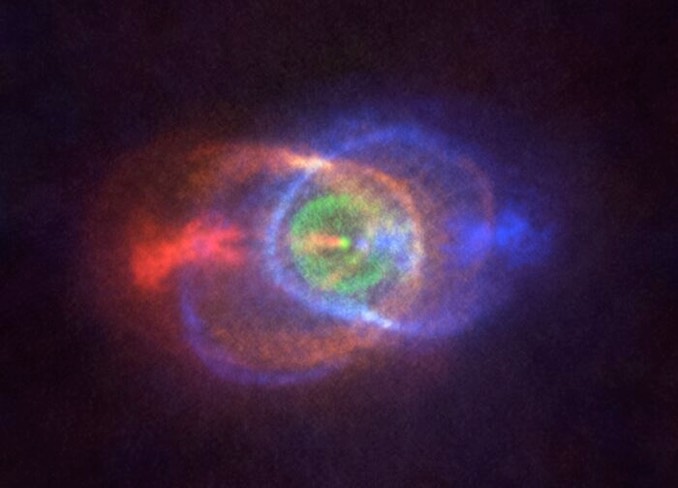
As stars like the sun burn up the last of their hydrogen fuel, they can expand to become red giants before losing their outer layers and leaving behind a compact, slowly cooling core known as a white dwarf. Astronomers using the Atacama Large Millimetre/submillimetre Array, or ALMA, have found a binary star system where that process has been interrupted, creating an unusual cloud that sheds light on the transition from red giant to white dwarf.
“The star system HD101584 is special in the sense that this ‘death process’ was terminated prematurely and dramatically as a nearby low-mass companion star was engulfed by the giant,” said Hans Olofsson of the Chalmers University of Technology in Sweden, lead author of a paper published in Astronomy & Astrophysics.
Located in the southern constellation Centaurus, HD101584 is made up of a star that expanded to red giant stage, swallowing up a lower mass companion. The smaller star then spiralled inward. While it did not collide with the larger star’s core, it triggered an outburst that blasted through material ejected earlier, leaving the larger star’s core exposed amid scattered gas layers.
The result is a spectacular structure that resembles interlocking smoke rings.
“Currently, we can describe the death processes common to many Sun-like stars, but we cannot explain why or exactly how they happen,” said Sofia Ramstedt of Uppsala University in Sweden, co-author of a paper published in Astronomy & Astrophysics.
“HD101584 gives us important clues to solve this puzzle since it is currently in a short transitional phase between better studied evolutionary stages. With detailed images of the environment of HD101584 we can make the connection between the giant star it was before, and the stellar remnant it will soon become.”



